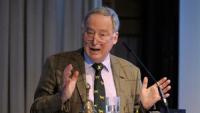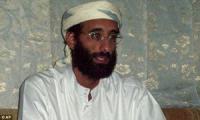-
Deadliest mass shooting in U.S. history: at least 50 killed, more than 400 injured
A 64-year old gunman barricaded himself in his room on the 32nd floor of the Mandalay Bay Resort and Casino, then fired thousands of rounds from several automatic weapons on an outdoor country music festival taking place outside the hotel. At least 50 people have been killed and more than 400 injured at a country music festival in Las Vegas. This is the deadliest mass shooting in U.S. history. The Las Vegas police reported that two police officers have been killed.
-
-
Six things to know about mass shootings in America
America has experienced yet another mass shooting, this time at the Mandalay Bay Resort and Casino on the strip in Las Vegas, Nevada. It is reportedly the deadliest mass shooting in U.S. history. As a criminologist, I have reviewed recent research in hopes of debunking some of the common misconceptions I hear creeping into discussions that spring up whenever a mass shooting occurs.
-
-
Israeli intelligence helped foil dozens of terror attacks worldwide
Israel’s intelligence agencies have stepped up cooperation with their foreign counterparts leading to the prevention of dozens of terror attacks around the world. Following the coordinated terror attacks in Paris that killed 130 people in November 2015, the intelligence branch of Israel’s General Staff made a decision to concentrate more on collecting information from foreign terrorists who had ties to Middle Eastern terror organizations.
-
-
White nationalists as much of a threat to U.S. as Islamists: FBI

In a testimony before the Senate Homeland Security and Governmental Affairs Committee last Wednesday, FBI director Chris Wray said his agency was currently conducting “about 1,000” open domestic terrorism investigations. He said that, by comparison, the FBI also has about 1,000 open cases related to the ISIS. In its May joint intelligence bulletin, the FBI warned white supremacist groups were likely to commit more violent attacks. The white supremacist movement “likely will continue to pose a threat of lethal violence over the next year,” the FBI bulletin said.
-
-
White nationalists as much of a threat to U.S. as Islamists: FBI
In a testimony before the Senate Homeland Security and Governmental Affairs Committee last Wednesday, FBI director Chris Wray said his agency was currently conducting “about 1,000” open domestic terrorism investigations. He said that, by comparison, the FBI also has about 1,000 open cases related to the ISIS. In its May joint intelligence bulletin, the FBI warned white supremacist groups were likely to commit more violent attacks. The white supremacist movement “likely will continue to pose a threat of lethal violence over the next year,” the FBI bulletin said.
-
-
America’s deadliest shooting incidents are getting much more deadly
The mass shooting that killed at least fifty people in Las Vegas last night was the deadliest in modern American history. The shooting marked the latest outbreak of gunfire and bloodshed to erupt in a public place, transforming a seemingly routine night into one of terror and carnage. The killing in Las Vegas surpassed the death toll of forty-nine people killed in June 2016 when a gunman in Orlando opened fire inside a crowded nightclub.
-
-
Understanding soccer violence could help the fight against terror
Soccer has long been tarnished by outbreaks of fan violence. Although media headlines often link the behavior to “hooliganism,” the activity could stem from potentially more positive motivations, such as passionate commitment to the group and the desire to belong. Understanding the root cause of the behavior may therefore help in tackling the violence and channeling it into something more positive, researchers suggest. This is especially important since both violent soccer fans and radicals appear to be are motivated by shared experience. The researchers found clear links between the psychology underlying soccer violence and other extremist activity, such as gang culture and terrorism, which is often rooted in a similar feeling of “brotherhood.”
-
-
Congressional amendments restore Maryland BioLab4 funding
Members of the Maryland congressional delegation attached amendments to the Homeland Security and Defense Department authorization bills to prevent the closure of the National Biodefense Analysis and Countermeasures Center (NBACC) at Fort Detrick, Maryland. President Trump’s budget for 2018 had eliminated funding for NBACC as part of cutting the budget of DHS Science and Technology Directorate (S&T) by 28 percent. At the end of May 2017, the research center received a letter from DHS stating that the facility’s closing procedures should start on 1October, with anticipated decommissioning by 30 September 2018.
-
-
Waltzing toward a two-front global war
Military analysts argue that the sine qua non of a superpower is the ability to fight two major campaigns in different regions of the globe nearly simultaneously. Critics of the George W. Bush and Barack Obama administrations said that reduced defense investment and a decade of counterinsurgency campaigns had left the U.S. military unprepared to do so. Still, Christopher Bolan writes in Defense One, the United States finds itself one step away from war on the Korean Peninsula and perhaps two from military confrontation with Iran, “dancing an uncertain waltz in which a misstep would be catastrophic.”
-
-
Vietnam War: Who was right about what went wrong – and why it matters in Afghanistan
The ghosts of the Vietnam War no doubt hovered over a recently assembled conclave of President Donald Trump’s advisers as they deliberated over the deteriorating situation in Afghanistan. In the Vietnam era, as today, the United States found itself engulfed in a seemingly never-ending war with mounting costs, unclear goals, and few signs of success. In both Vietnam and Afghanistan, successive presidents faced much the same options: Withdraw, decisively escalate, or do just enough to avoid losing. Like his predecessors in both wars, Trump chose the middle path – incremental escalation with no clear exit plan (what Daniel Ellsberg, in reference to the Vietnam War, called the “stalemate machine”). How can we to explain the seeming preference of U.S. presidents for muddling through – whether in Afghanistan or, fifty years ago, in Vietnam? It may be that the logic of the stalemate machine is built into the very concept of limited war. Or that it is a predictable consequence of how presidents manage the constraints posed by American politics. In any case, the histories of U.S. military involvements in Vietnam and Afghanistan should serve as warnings to future presidents who might be tempted to again jump onto the treadmill of perpetual war.
-
-
The Invisible Threat
In 1995, during the Monday morning rush hour in the Tokyo subway, thousands of commuters inhaled toxic nerve gas left leaking from little plastic bags. Twelve people died, and thousands more were injured in the deadliest attack in Japan since the Second World War. The attack was the work of Japanese cult Aum Shinrikyo. The cult members, many of them students of science, were unsuccessful in launching a true biological attack. They were clumsy and unfocused and the tools too complex to pull off with ease. But those efforts were in the mid-1990s, and the tools for creating bioattacks have become more accessible. The Trump administration, however, is threatening to cut the funding for science needed to defend against such attacks.
-
-
Germany’s newly elected populist, far-right AfD: We will fight an “invasion of foreigners”

Leaders of the populist, nationalist AfD party, which entered the Bundestag for the first time after Sunday federal election, have pledged to fight an “invasion of foreigners” with its new MPs. Alexander Gauland, speaking in Berlin the morning after the election results came in, said his party would “uncompromisingly address” immigration, an issue the party has campaigned on since late 2015. “One million people – foreigners – being brought into this country are taking away a piece of this country and we as AfD don’t want that,” Gauland told a press conference late Sunday. “We say we don’t want to lose Germany to an invasion of foreigners from a different culture. Very simple.”
-
-
Anwar al-Awlaki’s sermons, lectures still accessible on YouTube

Anwar al-Awlaki, the U.S.-born leader of external operations for al-Qaeda in the Arabian Peninsula (AQAP), was targeted and killed by a U.S. drone strike on 30 September 2011. Yet, six years later, Awlaki continues to radicalize and inspire Westerners to terror, due to the ongoing presence and availability of his lectures online, including on YouTube. As of 30 August 2017, a search for Anwar al-Awlaki on YouTube yielded more than 70,000 results, including his most incendiary lectures.
-
-
There is almost no research on what distinguishes potential terrorists: Study
A recent analysis of the existing research on factors associated with an individual’s risk for engaging in terrorist activity highlights how little we know about these factors and the need for additional research in this area. “It’s important to have a better understanding of what distinguishes potential terrorists from individuals who pose little or no risk of becoming terrorists, whether we’re talking about Middle Eastern terrorist organizations or domestic terrorists in the United States,” says one of the study’s authors.
-
-
Soft target, hard problem: Keeping surface transportation secure
Maintaining security on the U.S. surface transportation systems takes significant resources and manpower, both which tend to be in short supply. What if there were a way to detect potential threats in bags or on persons from the moment they entered the subway? What if there was a way to know the path individuals take as they move through the system, and to relay that information to transit police in real-time?
-
More headlines
The long view
“The Federal Government Is Gone”: Under Trump, the Fight Against Extremist Violence Is Left Up to the States
As President Donald Trump guts the main federal office dedicated to preventing terrorism, states say they’re left to take the lead in spotlighting threats. Some state efforts are robust, others are fledgling, and yet other states are still formalizing strategies for addressing extremism. With the federal government largely retreating from focusing on extremist dangers, prevention advocates say the threat of violent extremism is likely to increase.
Luigi Mangione and the Making of a ‘Terrorist’
Discretion is crucial to the American tradition of criminal law, Jacob Ware and Ania Zolyniak write, noting that “lawmakers enact broader statutes to empower prosecutors to pursue justice while entrusting that they will stay within the confines of their authority and screen out the inevitable “absurd” cases that may arise.” Discretion is also vital to maintaining the legitimacy of the legal system. In the prosecution’s case against Luigi Mangione, they charge, “That discretion was abused.”
